
London-based coffee company Grind is rapidly reshaping the industry. Offering a diverse range of high-quality coffee products – from whole beans and ground coffee to Nespresso® compatible pods, Grind has successfully established a strong offline foothold and dedicated clientele in London.
Their recent triumph of selling the one millionth online order reflects their rising popularity, extending beyond the UK and into the transatlantic sphere. Grind recently secured a remarkable $30 million in funding to supercharge their aggressive expansion strategies.
Let’s delve into the narrative of how Highrise enabled Grind to transition effectively from a traditional brick-and-mortar brand to a commanding Direct-to-Consumer (DTC) online presence.
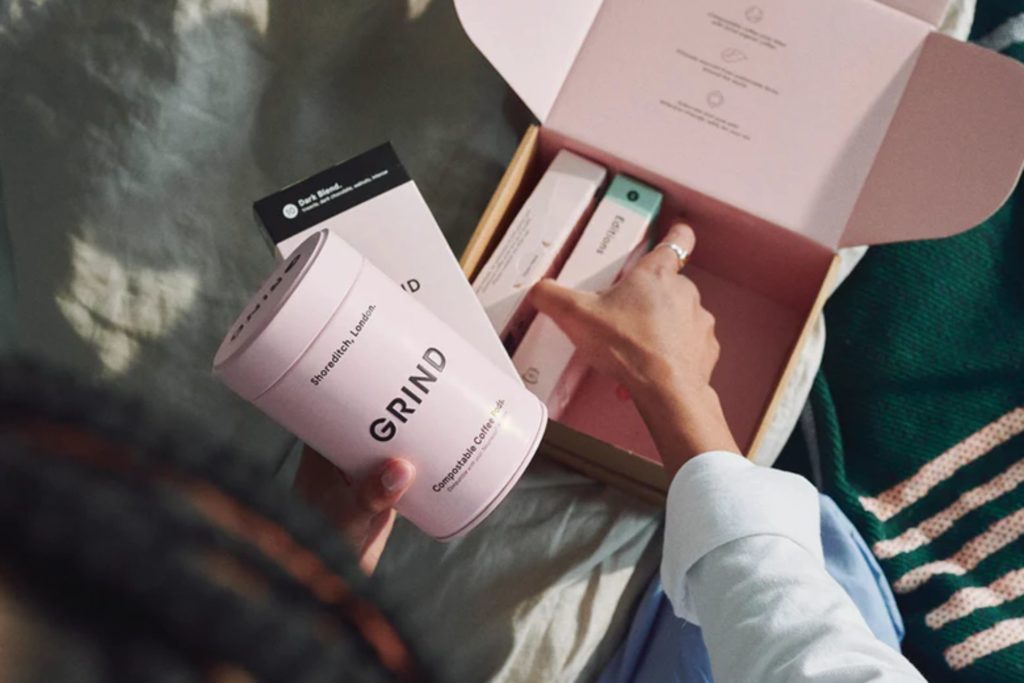
When we first partnered with Grind we scoped out the market landscape. We were confronted with an already saturated online coffee market, a reality compounded by Grind’s minimal online presence. It was clear from the start that Meta or Google Ads on their own will not help us hit ambitious growth targets. Whilst the brand boasted a cult following in the real world in London, when it came to digital we were effectively starting from scratch. In addition, this marketplace was noisy: aggressive new entrants and slower, but tenacious incumbents, turned the digital sphere into a battleground.
The marketing stack at launch and later to scale for a DTC proposition was minimal – and was missing crucial aspects such as ad content, tracking, and landing pages.
We had a clear mission: to establish Grind as a frontrunner online, a feat requiring a robust, comprehensive strategy.
When Highrise partnered with Grind Coffee, our mission was clear: to elevate the brand’s visibility, enhance its unique value proposition, and exceed growth targets in a noisy, competitive market. This mission hinged on three key strategies.
First, our goal was to articulate Grind’s unique value proposition clearly and construct an acquisition journey that effectively narrated their brand story. For every new client we onboard for our paid media services, establishing a clear communication matrix is key.
Second, we focused on crafting the essential infrastructure required for this task. This involved creating detailed landing page briefs, ad creative briefs, and implementing tracking systems. The latter was particularly crucial as Grind was dealing in both one-time purchase products and subscriptions, making it critical to monitor customer behaviors and preferences across both channels.
Finally, we developed a comprehensive ad testing framework. Given Grind’s brand ethos and its strong affinity with Gen Z and millennial customers, the challenge lay in striking the right balance between creating ads that were both highly engaging and effective in driving conversions.
To this end, we adopted a scientific approach to ad testing, continually refining our methods based on performance data and user feedback. This iterative, data-driven approach continues to be the cornerstone in ensuring the success of Grind’s digital marketing campaigns both in the United Kingdom and the US.
First party data: gathering insights from existing customers
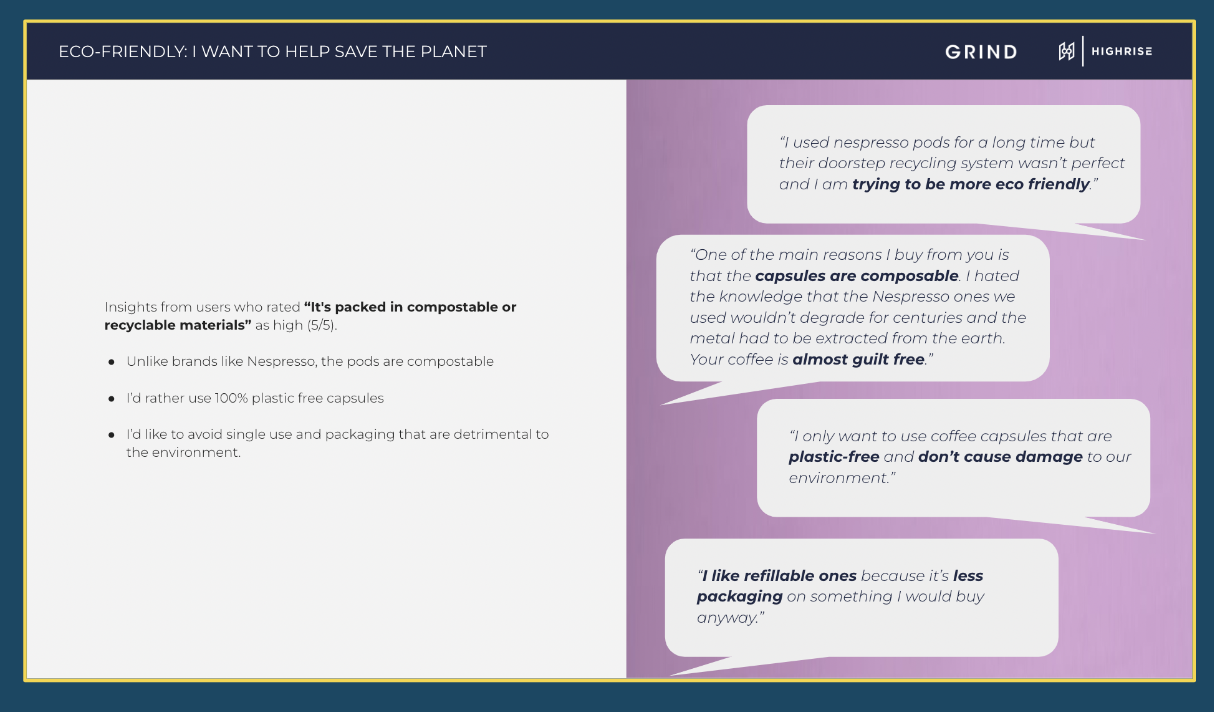
Mapping out hooks, buying drivers and positioning statements in a value proposition
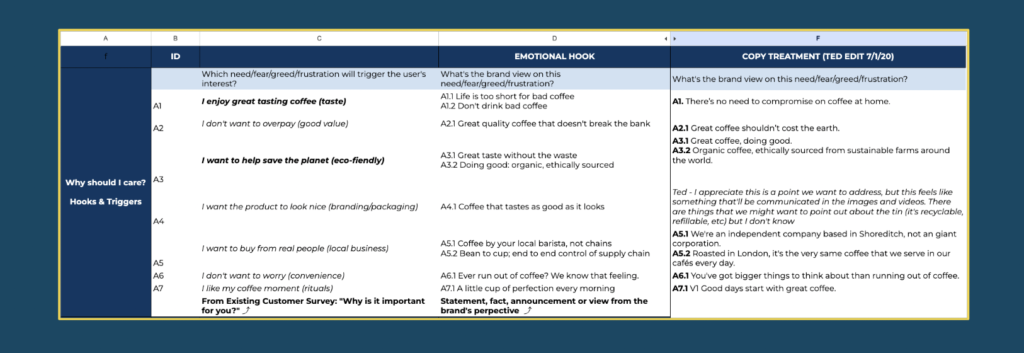
our first step was to clearly define our market strategy and messaging. Given the noisy marketplace filled with competitors, we needed a distinct approach. We began by identifying Grind’s unique selling points.
Using our tried-and-tested frameworks, we figured out why customers preferred Grind’s coffee and how stakeholders saw the business. This overlap helped us create a solid value proposition and design the initial marketing funnels.
Building on Grind’s offline reputation, we understood that customers valued their eco-friendly ethos and quality coffee. We used this information to position Grind’s products as the answer for those seeking sustainable coffee habits and a superior home-brewed coffee experience.
While competitors were largely echoing each other and running similar ad campaigns, probably taking cues from the latest marketing trends on LinkedIn, we took a different path. We stuck to our core value proposition and focused our communication on what truly matters. By emphasising Grind’s unique commitment to sustainable practices and high-quality coffee, we resonated with consumers on a deeper level, setting us apart in a saturated marketplace.
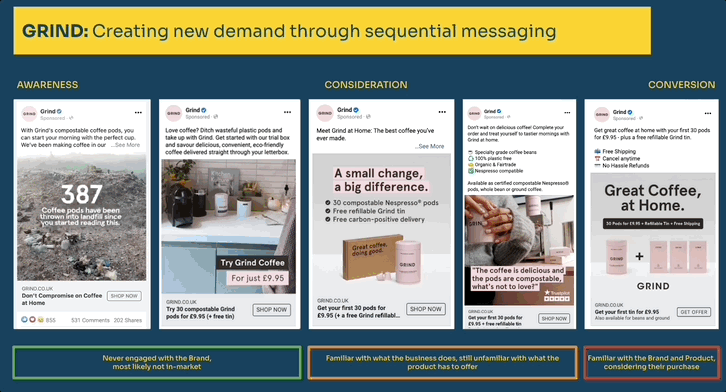
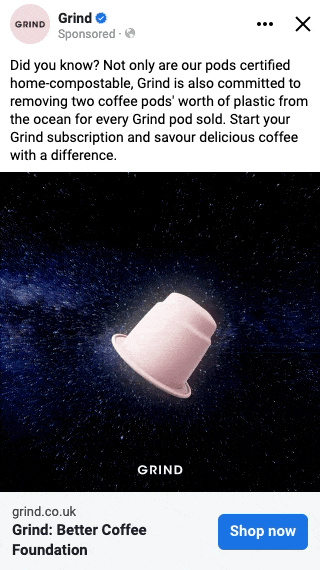
With a solid foundation established, we set out to create scalable marketing funnels. By employing sequential messaging funnels and rigorous testing, we identified the messages that hit home with the market and the funnel configurations (consisting of messaging, offer, ads, landing pages) that maximised our media budgets.
While competing brands were largely focusing on the convenience of home-delivered pods, we concentrated on messages and hooks that Grind’s core audience found most compelling.
A large part of our target market, who would be encountering our ads for the first time (and thereby consuming a significant part of our budget), were likely unfamiliar with the Grind brand and possibly not even active shoppers. Hence, our initial messaging focused on the brand’s commitment to environmental conservation and other buying drivers that we have identified as being informed. Depending on the audience’s engagement levels on the platform (like video views) or post-click actions (like landing page visits or reaching the product page), we shifted our messaging to a more product-centric narrative, addressing potential sales resistance and nudging users towards making a purchase.
Whilst we can’t publicaly share confidential information, by 2021 it was reported that Grind was turning over £500K in monthly revenue online.
In August 2021 the company raised £22 million to accelerate the growth and fuel expansion efforts in the US.
Highrise has helped us transform our business from traditional highstreet retail to direct to consumer first. Having just raised a £22m round to scale our efforts further, it’s fair to say that our DTC transformation simply wouldn’t have been possible without Highrise.
David Abrahamovitch, CEO
Ready to unlock growth for your brand? Let’s start a conversation about how the Highrise Blueprint can help you achieve your business objectives.
hello@thisishighrise.com
We’ll be in touch within 24 hours.
Highrise Marketing
Colonial Building
59-61 Hatton Garden, London
London EC1N 8LS
© Highrise Marketing 2025